Wiki Project: Super '94 Q3
By Mento 2 Comments
Q3 has always and will continue to be the quiet before the storm, in terms of video game release schedules. Many developers (well, many publishers, at least) deliberately aim for the holiday season, and that's true of the US, Europe and Japan. The only difference is about a month: most US releases hit November, around Thanksgiving and with ample time before Christmas, while Japan seems to dump all theirs in December itself. Don't expect the Super '94 Q4 blog to show up any time soon, is all I'm saying.
That said, we've still got ample releases for the Super Nintendo and Super Famicom to take a gander through for this quarter. Excluding SNES/SFC games that were released during this time after already being released elsewhere, this period saw 105 new releases. As per usual, we'll be explicating on what I consider to be the ten most "interesting" - not necessarily "best" or "most well known" - releases of each month, along with a few honorable mentions of some note that fell short of the main list.
Here's the usual disclaimer: While I personally checked every one of these pages to see what work needed to be done, in a few cases creating the pages from scratch, the vast majority of the required work had already been completed by many other industrious wiki editors. You can see how much or how little I contributed by visiting the page and checking the list of wiki editors in the bottom right corner. The last thing I want to imply is that I brought all these pages up to an adequate standard single-handedly.
July
July is unusual in that it didn't see a single US premiere. There were still games released in the US during this time, of course, but these were all games that had previously been released in Japan and Europe. There's one possible exception I'll get into below, but no-one ought to be surprised given the number of Summer slumps we tend to see. Even so, there'll be some names you recognize here.
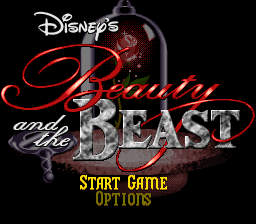 | Disney's Beauty and the Beast: The intelligent and resourceful Belle is the lead character of Beauty and the Beast, her capture instigating the events of the movie (though not by her own volition) and much of the movie is spent helping the eponymous Beast to release the shackles of his self-imposed solitude after she sees the good in him. But who wants to play as a girl, am I right? Certainly not all these focus groups of random assholes we keep finding. In Disney's Beauty and the Beast, the Beast stomps throughout his castle looking for the wayward Belle, who's relegated to a quest marker, and fights his suddenly malevolent magical furniture. Gaston probably shows up at the end. No-one fights like Gaston, douses lights like Gaston, no-one gets hit three times and falls to his death like Gaston! |
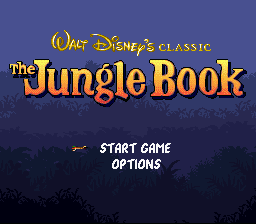 | Disney's The Jungle Book: Yeah, there's two Disney games this time. I did tell you this was a sparse month. Actually, The Jungle Book's not too bad: it was part of that wave of Virgin Interactive Disney licensed games (which were sometimes developed by other studios) along with the Lion King and Aladdin that, while occasionally filled with confusing stage layouts and crazy difficulty, still had superlative art, animation and music. The Jungle Book movie is from as far back as 1967, unlike the other more contemporary Disney movie license games, but I guess if you're making these games faster than Disney's animating their movie counterparts, you have to get creative. (Don't usually see "creative" and "movie license games" mentioned in the same sentence.) |
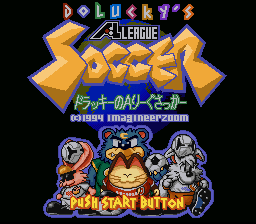 | Dolucky's A-League Soccer: Dolucky is everyone's favorite Japanese Coca Cola mascot; he and his crew of Sanrio-esque dog, rabbit and bear rivals were created to represent each of Coca Cola's disparate soft drink brands. He's appeared in a video game before - a Super Famicom baseball game I think I mentioned in last year's 1993 round-up - and here he is again playing soccer. This time he appears to have been distanced from the soft drink licensing, and remains simply a mascot of developers Zoom Inc.. Actually, this game shares more than a few similarities with Capcom's earlier Mega Man Soccer (an equally unlikely excuse to take a bunch of odd characters and have them kick a ball around) with its horizontal perspective and use of "powered up" kicks. |
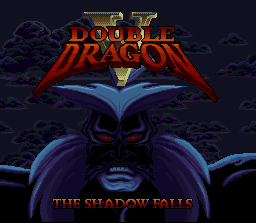 | Double Dragon V: The Shadow Falls: Suitably for a game subtitled "the Shadow Falls", we're entering Double Dragon's dark unknown period here, when it stopped being about rescuing Marian and more about terrible animated TV shows and even worse movies starring Scott Wolf. This one-on-one fighter game is based on that animated show (and another fighter, the Neo Geo Double Dragon from 1995, is based on the movie) and features Billy and Jimmy and a whole cast of new characters. (They literally dropped recurring bosses Abobo and Willy through a magical "shadow mural" so they could get new people in.) It's competent, but it's not exactly Street Fighter II. Nor is it Double Dragon for that matter. (This is the one game that was possibly released in the US first, since I left that trivial factoid dangling. I could only find the exact European date.) |
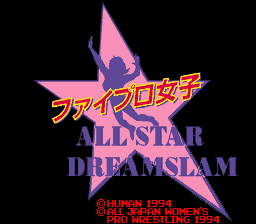 | Fire Pro Joshi All-Star Dream Slam: Female wrestling is a much different beast in Japan than in the US, in part because they take it more seriously than the WWE does. The wrestlers of the All Japan Women's circuit (an exclusively female promotion) come in all shapes and sizes and gimmicks, just like their male equivalents, and this adaptation of Fire Pro Wrestling seeks to pit them against each other with the usual FirePro emphasis on timing and precision over button-mashing. One of the first all-female wrestling games for the Super Famicom, but certainly not the last. |
 | Lode Runner Twin: Justy to Liberty no Daibouken: Japan has a weird history with Lode Runner that is second only to Wizardry in how Japanese developers took the original source and went in wildly divergent directions with it. Lode Runner was created by an American for the Apple II (Douglas E. Smith: a fascinating guy who would later go on to oversee localizations of Secret of Mana and Chrono Trigger, and sadly passed away last year) but its mixture of precise platforming and puzzle-solving saw way more success in Japan than it did elsewhere, spawning multiple Japan-only sequels and spin-offs. Lode Runner Twin is one of them: a cutesy multiplayer-focused (hence the "twin") variant of the game with apprentice magicians Justy and Liberty. |
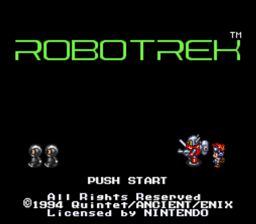 | Robotrek: Known as SlapStick in Japan, Robotrek is the "lost" Quintet SNES RPG (though most would say Terranigma holds that dubious distinction, as it never saw a US release). Rather than treading Quintet's usual spheres of fantasy godhood (ActRaiser) and heady ecological/anthropological themes presented through a world of magic (like their Soul Blazer trilogy), Robotrek is a light sci-fi RPG about creating robots and having them fight for you, like a automaton Pokémon (Pokématon? I'll have to workshop that). Unlike the action-RPG Soul Blazer games, Robotrek is entirely turn-based. It's a little more offbeat than Quintet's other offerings too, and possibly a little weaker, though as a Quintet RPG it's still essential playing for any SNES RPG fanatic. |
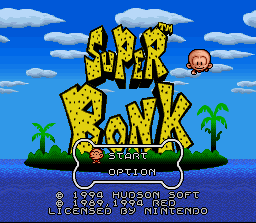 | Super Bonk: Hudson finally saw the writing on the wall regarding the TurboGrafx, a console which they helped bring into the world that by 1994 was all but dead, and started producing their mascot Bonk series for the Super Nintendo. As the fourth game, Bonk had already settled into an easy groove of absurdist humor and meat-based platforming, with many surprises in store for series fanatics. Super Bonk in particular seems to use the lion's share of elements introduced in Bonk 2 and Bonk 3. Of course, if you hadn't touched a Bonk game up until this point, Super Bonk's eccentricities and multiple power-up systems are going to resemble a terrifying and incoherent stream of consciousness. There's appeal in that too, as evinced from watching the Game Grumps try to make sense of what they're seeing. |
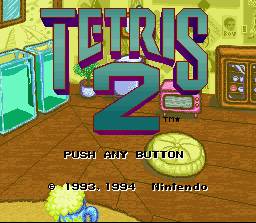 | Tetris 2: Tetris 2 is like New Coke, in that tampering with a classic doesn't always work out as well as you'd hope. Now some sort of Dr. Mario bastardization, Tetris 2 invents new disembodied tetraminos and changes the gameplay from filling lines to lining up blocks of the same color. I have no idea how well this "new and improved" version did, but there's probably a reason every subsequent Tetris game went back to lines and the standard seven pieces. Hey, at least they tried to mix Tetris up. Considering how poorly Ubisoft's Tetris Ultimate game seemed to run on PS4, there are bigger ways to screw up a game so mechanically simple. |
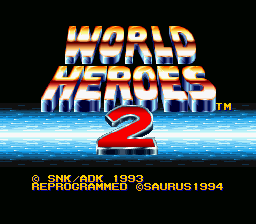 | World Heroes 2: It won't be the first Neo-Geo fighter adaptation we'll see this time, but World Heroes 2 continues a series of scaled-down SNES ports that almost seem to have been created to say, "Hey, you know that new Neo Geo console? The one that's a bargain at $700? This game plays fantastically on it, instead of looking like a so-so Arcade port like every other SNES fighter." I wonder if that's more or less cynical than suggesting SNK put it on every console that could run a compromised version of it to make more money? Man, I am jaded as hell today. World Heroes 2 is still fun; it's probably not in the upper tiers of SNK fighters, but it looks good and has some interesting characters based on famous historical figures. |
Honorable Mentions: Battle Zeque Den is a side-scrolling multi-plane brawler that is distinctive for having an all-female roster (that seems to be a thing this month); Hat Trick Hero 2 is the first SFC soccer game based on the 1994 World Cup to actually get the qualifying teams right (mostly, as Japan deviously replaced the national team of their disliked neighbors South Korea with their own non-qualifying team), so it figures that this particular one wasn't released internationally; and Pieces, which is one of a rare breed: a competitive jigsaw game.
August
August continues to pick up the pace after July, producing a total of 35 new releases which includes yet another beloved RPG staple of the Super Nintendo's library. The hotter months clearly did nothing to diminish the Super Nintendo's prolific output during the system's peak year of development.
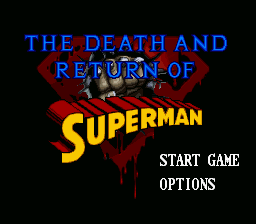 | The Death and Return of Superman: One of many Super Nintendo comic book licensed games to take an ongoing arc from the pages of DC or Marvel and turn it into an uninspired brawler. In fairness, this is probably one of the best Superman video game adaptations ever made, if only because the Man of Steel has a notoriously poor track record for this medium. When you have a superhero that has near-infinite power, you don't want to hand him over to a player and then try to build a difficulty curve around playing as him. Better that you kill him off early and have a bunch of weaker lookalikes take the spotlight. |
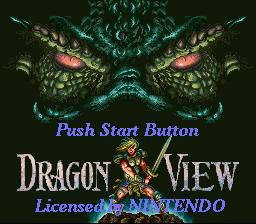 | Dragon View: Dragon View is Japan attempting to follow where France once led in this sequel to the 1989 Infogrames 3D pioneer Drakkhen. Kemco originally adapted the game for the Super Nintendo back in 1991, and took the reins for this SNES-only sequel. It's actually a little more coherent, with more emphasis on the story and a clear-cut progression system from one continent to the next. There's some amount of open-world free-roaming too, and the player can return to earlier dungeons at any time later in the game if they're getting overwhelmed on the first visit. It feels like a version of Drakkhen that won't immediately confuse and disorient you, or drop a terrifying beast from the stars on your low-level party's head without warning, so that's something. |
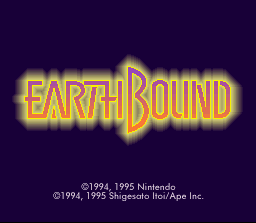 | Earthbound: Earthbound, or Mother 2, probably doesn't need much of an introduction. 1994 proved what a banner year it was for Super Nintendo RPGs by publishing this and Final Fantasy VI very close to each other. I don't doubt that it lead to a lot of wonderful Summers of 1994 for those fortunate to own both games. Ness, an unassuming all-American kid from Onett, manages to unlock his potent psychic powers on the same day he learns that he must stop a terrifying space alien from conquering the Earth. The game's absurdism, humor, inimitable style and solid gameplay helped cement it as one of the system's best games, period. Fuzzy pickles! |
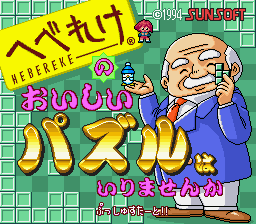 | Hebereke no Oishii Puzzle: The Hebereke games began and ended with the NES SpaceWhipper Ufouria: The Saga in the US, though Europe was fortunate to receive a couple of its puzzle games for the Super Nintendo: Hebereke's Popoon and Hebereke's Popoitto. The rest of the games featuring SunSoft's little menagerie that include a penguin with a beanie cap and a ghost wearing shades remained Japan-only, including this board-game-based mini-game collection. The games are a little more cerebral than I was expecting, including one where you're expected to complete a crossword puzzle in a short time limit. |
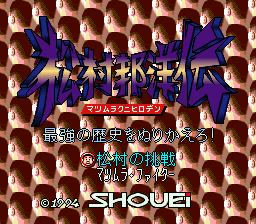 | Matsumura Kunihiro Den: Saikyo no Rekishi wo Nurikaero!: This word salad title befits one of the oddest fighters on the Super Famicom. Headlined by Japanese impressionist Kunihrio Matsumura, the game features multiple personalities from the same talent agency (Nurikaero) as they fight each other in ridiculous assumed roles of "street tough" and "karate expert". The goofy expressions on their digitized faces are both amusing and disquieting. There's something about digitized faces on cartoon bodies that really messes with my uncanny valley apprehension, I dunno. |
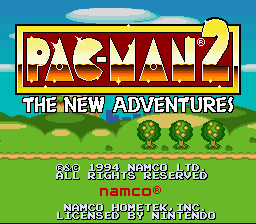 | Pac-Man 2: The New Adventures: I.e. that one Pac-Man game where you keep yelling at him to do stuff, and he roundly ignores you and struts around like an asshole. Pac-Man has always been a trailblazing series, producing one of the first identifiable video game heroes, one of the first games to exhibit a female protagonist, one of the first side-scrolling platformer games ever made (and before Super Mario Bros., which is more or less the blueprint for every 2D platformer that came after) and then this game, which attempts to create a unique method of making a player's connection with the video game character more meaningful, if less direct. In this game, however, Pac-Man is an extremely mercurial fellow who is taken to wild mood swings, and the player feels like they have less control than in any game previous. It doesn't help that the "action" sequences are more difficult than they ought to be. It's an odd experiment that perhaps didn't pan out the way Namco wanted it to, but it's certainly an interesting use for the license. |
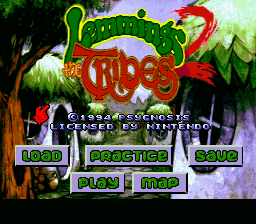 | Lemmings 2: The Tribes: In some ways Lemmings 2 felt superior to the original Lemmings, simply because they piled on the new content to an insane extent. Instead of taking the default Lemmings through a hundred courses with a different combination of the eight basic Lemming abilities (Blocking, Digging, etc.) there were now twelve different clans with different looks and theme music, and a staggering 51 skills that might be assigned to them. The game even thought to create a practice mode where the player can test any of the new skills, including those that could be manipulated with a player-controlled fan. That the player could switch between the twelve clans at any time meant that there was less frustration when coming up against a difficult stage, but also a wildly fluctating difficulty curve. Playing twelve different "tutorial" stages, for instance, wasn't an ideal use of the player's time. Still, it's a big confident sequel that mixes things up while keeping the core quality intact. |
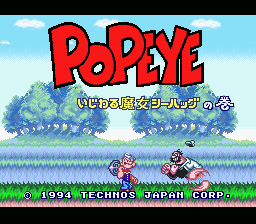 | Popeye Ijiwaru Majo: Sea Hag no Maki: This Japan-only Popeye game is more than a little unusual. It involves Popeye's frequent enemy the Sea Hag, as she curses his friends to stone and forces Popeye to roam around a board game like map to find each piece. The squares Popeye can land on might take him to a short platforming stage, or a one-on-one fight with Bluto or some other heavy, or somewhere where he can spend money on additional upgrades and health refills. It feels like there's a lot of imagination and variance here, and the board game format isn't a particularly common framing device for platforming/action games like this (though there was that one Super Nintendo Flintstones game that did something similar). |
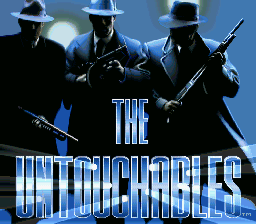 | The Untouchables: This is a weird one. While many video game adaptations of The Untouchables were based on the 1980s movie with Kevin Costner, Robert De Niro and Sean Connery, this particular one decided to base itself on the much more obscure 1993/94 TV series featuring Everwood's Tom Amandes as Eliot Ness and frequent movie heavy William Forsythe as Al Capone. The gameplay's about what you'd expect: it alternates between platformer-shooter action that resembles that horrible Dick Tracy NES game, and a third-person shooting gallery mode where the player has to constantly move in and out of cover. Still, though, why base the game on the TV show? Did Sean Connery refuse to be involved with another SNES movie license after The Hunt for Red October? |
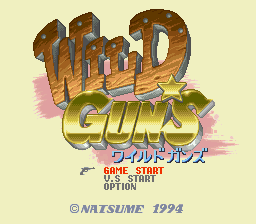 | Wild Guns: Wild Guns is one of the most exciting and frantic shoot 'em ups for the Super Nintendo - a cartoonish sci-fi Western where the orphaned Annie and stoic Clint gunsling their way through various henchmen and robots belonging to the gang that gunned Annie's family down. It's technically not quite an on-rails shooter: though the screen remains static, the players can run and jump to the left and right to avoid incoming gunfire, and the stage becomes progressively worse for the wear as the player(s) leave bulletholes in everything. Natsume were possibly the best developers for this era when it came to creating colorful and fun multiplayer games, with this and the Pocky and Rocky series. |
Honorable Mentions: The unfortunate feline Eek! The Cat got his own game about keeping his owner from harm by inviting harm unto himself, though it's remarkably similar to that Rocko's Modern Life game from a few months ago; Mr. Nutz, in spite of his name, is the one squirrel platformer protagonist who isn't constantly spouting double entendres and cursing; and Sanrio Shanghai is pretty much what it says on the tin - a matching tile game featuring Sanrio (Hello Kitty) characters.
September
Because September saw an impressive 40 releases, I've extended the number of honorable mentions from three to five. But even if there's a lot to get through this month, the ones to follow are going to eclipse it in a big way.
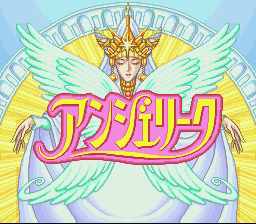 | Angelique: Thought to be the originator of the "otome" dating sim genre, where the main character is a woman and the love interests are all hunky and/or androgynous men, rather than the usual reverse. Angelique is first and foremost a strategy sim game where the player must manage a kingdom and help it to prosper in order to succeed the Queen of the Cosmos. She's helped by any number of nine male guardians, and can choose to give this right to rule contest the middle finger in order to live happily ever after with a man of her choosing after a few optional courtship cutscenes. It was developed by an all-woman team within Koei called Ruby Party, presumably as an attempt to get more women playing games. |
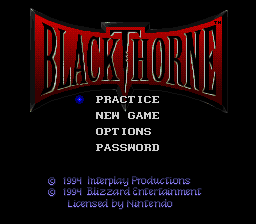 | Blackthorne: Still the coolest Blizzard IP, albeit in a WWE Attitude-era Stone Cold sort of way with its bemulleted badass hero wielding a wifebeater and a shotgun, Blackthorne is a game that superficially resembles Delphine's Out of This World and Flashback but piles on the dark atmosphere and machismo that seemed to peak in the 1990s, when I guess we all just collectively grew up (I miss the before-times). The hero proceeds through a number of stages, rescuing prisoners (or just murdering them) and disintegrating the monsters that threaten his homeworld of Tuul. Cool fact: the box art was done by Image Comics' Jim Lee. |
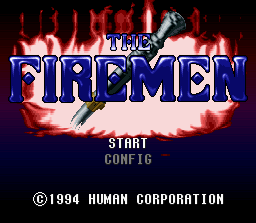 | The Firemen: A firefighting sim might not sound like the most exciting and action-packed game, though I should probably be giving the brave firefighters out there a little more credit. In an unusual twist, however, this game is depicted as a cinematic thriller/disaster movie where the flames seem to have a life of their own (not unlike Backdraft) and the player is constantly being surprised by dramatic turns as two firefighters vainly try to manage a chemical fire in a skyscraper that may have some nuke-tier explosive compounds in its basement. It's a weird little game that didn't sell too well, but it has distinctive character and the top-down (water-)shooter gameplay is quite solid. Well, liquid. |
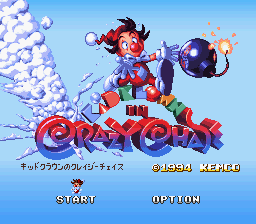 | Kid Klown in Crazy Chase: In this slapstick game, the player is forced to run an obstacle course to reach a bomb before its lit fuse does. The main character is one of the most expressive for any game on the console, and there's a lot of stuff happening to keep players on their toes. The isometric courses might remind you of Paperboy (though you're moving in the opposite direction) but the weird little asides and surprises recall more of a Looney Tunes vibe. |
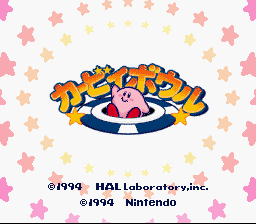 | Kirby's Dream Course: Probably the best golf game on the system, or any system, Kirby's Dream Course puts the pink puffball through his paces as he putts around a series of miniature golf courses. The goal of each hole is to remove all the enemies: each enemy will replenish Kirby's health by one point, though as Kirby loses one point for each shot, the player has to keep a pace of at least one enemy per turn. The last enemy will turn into the hole, which leads to the next course. The game really shines with its multiplayer, as players compete by not only being the first to clear all enemies and sink Kirby in the hole, but by stealing each other's stars in the process. It's devious. |
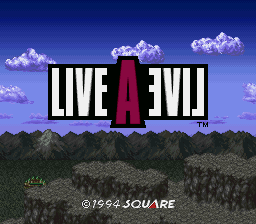 | Live A Live: One of Squaresoft's more ambitious RPGs, and sadly one that never saw an international release, Live A Live provides the player with seven (and a secret eighth and nineth) scenarios set during different eras of history, going from the prehistoric to the far-future. While the seven scenarios share the tactical grid- and turn-based combat, it finds different ways to utilize it depending on the scenario: a street fighter hoping to win a tournament only fights one-on-one battles, learning special techniques if the enemy happens to use it on the player character; a helpless robot can only fight in the virtual world with his hacking tools; a ninja can choose to kill every opponent in the castle he visits, or leave everyone but the final boss alive. It's an endlessly inventive game, even if some of the scenarios are less fun than others. |
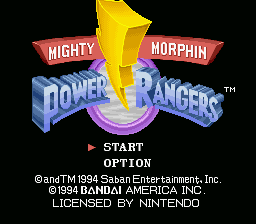 | Mighty Morphin Power Rangers: It'd be easy to dismiss this game. After all, it's a licensed brawler based on a Super Sentai adaptation for US audiences that was briefly the biggest thing in children's entertainment. While many have fond memories of being wrapped up in that 90s zeitgeist, anyone who was immune to the charm of transforming teenagers beating up stuntmen in rubber costumes back then would be equally (Rita) repulsed now. Honestly, though? It's probably in the top five brawlers for the Super Nintendo, at least of the ones that were made especially for consoles rather than being a compromised Arcade conversion. The five characters all move and act differently, each has their own weapon while transformed with variable ranges and damage outputs, the game looks great and moves along at a steady clip and the game ends with a massive fight between the Voltron-esque Megazord and the "kaiju of the week". It's another Natsume developed joint, which explains its surprising quality. |
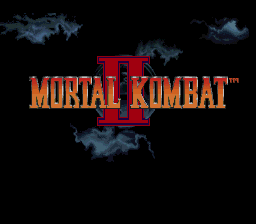 | Mortal Kombat II: Probably one of the best fighter games ever made, if we're talking accessibility over complexity. But then even serious FGC fighter game fans have a lot of affection for the second Mortal Kombat, as it fixes the problems with the original and adds even more memorable characters to its roster of demons, Edenians, ninjas and sardonic movie stars. Unlike the dire situation with the first game, the Super Nintendo conversion of the Arcade Mortal Kombat II is fairly decent this time around, with Nintendo reversing their stance on showing blood and the series' trademark brutal Fatalities. No flop sweats this time around. |
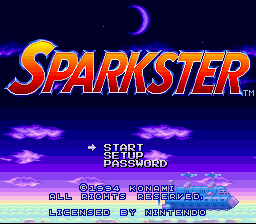 | Sparkster: Though primarily known as a Genesis franchise, the Rocket Knight blasted his way onto the Super Nintendo for this non-canonical spin-off that still closely resembles the original. As is typical of Konami games of the period, Sparkster looks and sounds fantastic and Sparkster's rocket pack ensures that every stage moves along at a fast clip. Oddly enough, at around the same time, the Genesis saw its own canonical sequel which was also called Sparkster: the two games are subsequently mistaken for each other a lot, and it took a bit of wiki work to pry them apart and into separate pages. |
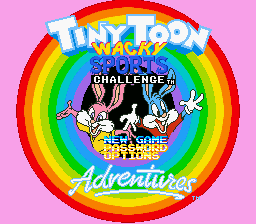 | Tiny Toon Adventures: Wacky Sports Challenge: Speaking of Konami and their high bar for quality around this time, they managed to do right by the Tiny Toons Adventures license with several bangers released throughout the 90s that expertly captured the series's Looney Tunes "zaniness" and meta humor. The Wacky Sports Challenge is a series of mini-games, all of which share a loose athletics/sports/Olympics theme but each has a unique Tiny Toons twist: the track and field event, for instance, involves using an elastic band to shoot your character towards a cliff, with the target of getting as close to the edge before stopping. |
Honorable mentions: We start with Bike Daisuki! Hashiriya Kon: Rider's Spirits, a weird and shameless clone that ought to look familiar as soon as you see screenshots of it; Ghost Chaser Densei is the Super Famicom version of an obscure but decent Arcade brawler named Denjin Makai that features a monkey-girl, a robot and a guy with an energy rifle that pops out of his arm; Samurai Shodown is another scaled-down Neo Geo fighter of some renown; Virtual Bart is the last console game in a series of not particularly great The Simpsons licensed games from Acclaim (they would put out another two for the Game Boy before stopping); and Vortex is another rare case of a Super Nintendo game that uses the Super FX chip for polygonal mayhem, this time for a morphing mech third-person shooter.
That should do it for this quarter. Stick around for the last, and largest, of these 1994 round-ups as soon as I process them. There's almost twice as many releases in October-November-December as there was this time, so... wheeeeee. Thanks for reading, and have a... super... event or product?

2 Comments